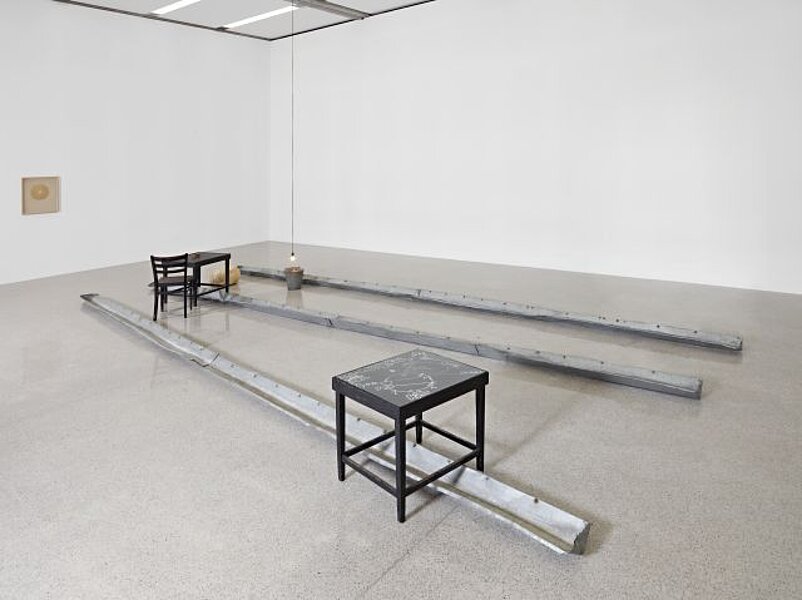
Beuys, Joseph
Basisraum Nasse Wäsche
Base Room Wet Laundry
1979
| Object description | Galvanized iron gutters, tables, one of them written on with chalk, chair, soap, aluminum bucket, light bulb, laundry |
|---|---|
| Dimensions |
Objekt:
height: 75 cm,
width: 750 cm,
depth: 230 cm
|
| Year of acquisition | 1981 |
| Inventory number | ÖL-Stg 160/0 |
| Creditline | mumok - Museum moderner Kunst Stiftung Ludwig Wien, Leihgabe der Österreichischen Ludwig-Stiftung |
| Rights reference | Bildrecht, Wien |
| Further information about the person | Beuys, Joseph [GND] | Beuys, Joseph [ULAN] |
| Literature |
Rudolf Steiner und die Kunst der Gegenwart Museum der Wünsche Joseph Beuys. Schwerpunkte der Sammlung Beuys.Die Revolution sind wir Museum moderner Kunst Stiftung Ludwig Wien Rudolf Steiner und die Kunst der Zukunft.Zehn aphoristische Betrachtungen Joseph Beuys : Denken. Handeln. Vermitteln. |
The environment "Basisraum Nasse Wäsche" was created in answer to a question that Beuys was asked about the former Museum of Modern Art housed in the Palais Lichtenstein in Vienna. Asked for his opinion of the exhibition space provided there, Beuys replied that it was fit only for hanging up wet laundry. The work is a polemic against the dominant feudal Baroque architecture, whose suitability as an exhibition venue was frequently in doubt. The original idea called for dripping wet laundry to be left for years to rot on the floors of the sumptuously ornate rooms. The aim was to instigate a kind of cleansing ritual that would highlight the historic distance between the present and the obsolete feudal view of the world represented by the palace. The subsequent addition of guttering to the installation broadened the setting on grounds of presentational necessity; the table and chair imply a working atmosphere and perhaps provide the visitor with an opportunity for reflection within the installation. The materials evoke associations that are also motivated by mythology or by individual (or collective) history and experience. The soap that binds together the heaps of washing, for example, is a cleansing agent with compulsive connotations. Its material characteristics are unifying and binding, even though it is manufactured chemically out of its antithesis, namely fat. The individual elements in the work thus act as a catalyst for thought processes and political empowerment. Beuys wanted the installation’s complex historical and personal allusions and readings to generate scope for autonomous thought and action based on the viewers’ cognitive skills.
© mumok – museum moderner kunst stiftung ludwig wien







